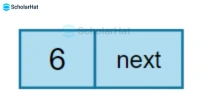12
DecCircular Linked Lists in Data Structures
Circular Linked Lists in Data Structures: An Overview
We know that in alinked list the last node pointer points to NULL. Whereas in a circular linked list, all nodes are connected to form a circle.In this DSA tutorial, we will see the circular linked list data structure in detail i.e. its features, working, implementation, etc. Mastering DSA can unlock roles with up to $15,000 higher annual pay. Join our Free DSA Course today! If you are still not good at pointers, please refer to the Pointers in C++ tutorial and come back.What is a Circular Linked List in Data Structures?
A circular linked list is a variation of linked lists where the pointer of the last node instead of pointing to NULL points to the first or the head node. This connects the first node with the last node resulting in a circle of interconnected nodes. There is no NULL at the end. We can traverse a circular linked list until we reach the same node where we started as there is no beginning and no ending.Representation of a Circular Linked List in Data Structures

Linked Lists, with one additional care to connect the last node to the first Node.Types of Circular Linked Lists in Data Structures
There are two types of circular linked Lists in Data Structures:next pointer. The next pointer of the last node of the list points to the first node of the list creating a circular structure. We can transverse only in one direction in a circular manner in this.
prev and next in the doubly linked lists in data structures. In this type also each node has two pointers, prevpoints to the previous node, and the next points to the next node. Here, in addition to the last node's next pointer storing the address of the first node, even the first node's prev pointer will store the address of the last node thus forming a circular structure.
Read More - Data Structure Interview Questions for Experienced
How to declare/create a Circular Linked List in Data Structures?
Syntax to Declare a Circular Linked List in Different Languages
class Node:
def __init__(self,data):
self.data = data
self.next = None
public class Node {
int data;
Node next;
public Node(int data) {
this.data = data;
this.next = null;
}
}
struct node
{
int data;
struct node *next;
};
Example of Creating a Circular Linked List in Data Structures
class Node:
def __init__(self, data):
self.data = data
self.next = None
# Initialize nodes
last = None
one = Node(10)
two = Node(20)
three = Node(30)
# Connect nodes
one.next = two
two.next = three
three.next = one
# Save address of third node in last
last = three
class Node:
def __init__(self, data):
self.data = data
self.next = None
# Initialize nodes
last = None
one = Node(10)
two = Node(20)
three = Node(30)
# Connect nodes
one.next = two
two.next = three
three.next = one
# Save address of third node in last
last = three
#include
// Define the node structure
struct Node {
int data;
Node* next;
};
int main() {
// Initialize nodes
Node *last;
Node *one = nullptr;
Node *two = nullptr;
Node *three = nullptr;
// Allocate memory
one = new Node;
two = new Node;
three = new Node;
// Assign data values
one->data = 10;
two->data = 20;
three->data = 30;
// Connect nodes
one->next = two;
two->next = three;
three->next = one;
// Save address of third node in last
last = three;
// clean up memory
delete one;
delete two;
delete three;
return 0;
}
one, two, and three are the nodes with data items 10, 20, and 30 respectively.- For node
one, the pointernextstores the address oftwo. - For node
two, the pointernextstores the address ofthree. - For node
three, thenextpoints to nodeone.
Standard Operations on Circular Linked Lists in Data Structures
- Insertion

- Insertion at the beginning: Let us understand this with an illustration. Suppose we want to insert a node with the value 6 at the beginning of the given circular linked list. The following three steps to accomplish this operation:
- Create a new node
- allocate memory for new Node
- assign the data to the new Node.
- store the address of the current first node in the new Node (i.e. pointing the new Node to the current first node)
- point the last node to new Node (i.e making new Node as head)


Example of Insertion at the beginning of a Circular Linked List
class Node: def __init__(self, data): self.data = data self.next = None class CircularLinkedList: def __init__(self): self.last = None # Pointer to the last Node of the Circular Linked List. def add_begin(self, data): if self.last is None: return self.add_to_empty(data) new_node = Node(data) new_node.next = self.last.next self.last.next = new_node return self.last def add_to_empty(self, data): if self.last is not None: return self.last # The list is not empty new_node = Node(data) self.last = new_node self.last.next = self.last # Linking back to itself in a circular manner return self.last def display_list(self, message="Circular Linked List"): if self.last is None: print("The list is empty") return print(message + ": ", end="") current_node = self.last.next while True: print(current_node.data, end=" ") current_node = current_node.next if current_node == self.last.next: break print() circular_linked_list = CircularLinkedList() # Creating a circular linked list with data 1, 2, and 3 circular_linked_list.add_to_empty(3) circular_linked_list.add_begin(2) circular_linked_list.add_begin(1) # Display the circular linked list before addition circular_linked_list.display_list("Before Insertion") # Adding a node with data 6 to the beginning circular_linked_list.add_begin(6) # Display the circular linked list after addition circular_linked_list.display_list("After Insertion")class Node { int data; Node next; public Node(int data) { this.data = data; this.next = null; } } class CircularLinkedList { Node last; public CircularLinkedList() { last = null; } public Node addBegin(int data) { if (last == null) { return addToEmpty(data); } Node newNode = new Node(data); newNode.next = last.next; last.next = newNode; return last; } public Node addToEmpty(int data) { if (last != null) { return last; // The list is not empty } Node newNode = new Node(data); last = newNode; last.next = last; // Linking back to itself in a circular manner return last; } public void displayList(String message) { if (last == null) { System.out.println("The list is empty"); return; } System.out.print(message + ": "); Node current = last.next; do { System.out.print(current.data + " "); current = current.next; } while (current != last.next); System.out.println(); } public static void main(String[] args) { CircularLinkedList circularLinkedList = new CircularLinkedList(); // Creating a circular linked list with data 1, 2, and 3 circularLinkedList.addToEmpty(1); circularLinkedList.addBegin(2); circularLinkedList.addBegin(3); // Display the circular linked list before addition circularLinkedList.displayList("Before Insertion"); // Adding a node with data 6 to the beginning circularLinkedList.addBegin(6); // Display the circular linked list after addition circularLinkedList.displayList("After Insertion"); } }#include <iostream> class Node { public: int data; Node* next; Node(int data) : data(data), next(nullptr) {} }; class CircularLinkedList { private: Node* last; public: CircularLinkedList() : last(nullptr) {} Node* addBegin(int data) { if (last == nullptr) { return addToEmpty(data); } Node* newNode = new Node(data); newNode->next = last->next; last->next = newNode; return last; } Node* addToEmpty(int data) { if (last != nullptr) { return last; // The list is not empty } Node* newNode = new Node(data); last = newNode; last->next = last; // Linking back to itself in a circular manner return last; } void displayList(const std::string& message) { if (last == nullptr) { std::cout << "The list is empty" << std::endl; return; } std::cout << message << ": "; Node* current = last->next; do { std::cout << current->data << " "; current = current->next; } while (current != last->next); std::cout << std::endl; } }; int main() { CircularLinkedList circularLinkedList; // Creating a circular linked list with data 1, 2, and 3 circularLinkedList.addToEmpty(1); circularLinkedList.addBegin(2); circularLinkedList.addBegin(3); // Display the circular linked list before addition circularLinkedList.displayList("Before Insertion"); // Adding a node with data 6 to the beginning circularLinkedList.addBegin(6); // Display the circular linked list after addition circularLinkedList.displayList("After Insertion"); return 0; }Output
Before Insertion: 1 2 3 After Insertion: 6 1 2 3 - Create a new node
- Insertion at a specific position/in between the nodes: Suppose we want to insert a node with value 6 after the head node with value 1 in the given circular linked list. The following three steps to accomplish this operation:
- travel to the node given i.e. node 1
- point the
nextof new Node to the node next to node 1 - store the address of the new Node at the next of node 1.

Example of Insertion in Between or at a Given Position in a Circular Linked List
class Node: def __init__(self, data): self.data = data self.next = None class CircularLinkedList: def __init__(self): self.last = None def add_after(self, data, item): if self.last is None: return None temp, P = None, self.last.next while True: if P.data == item: temp = Node(data) temp.next = P.next P.next = temp if P == self.last: self.last = temp return self.last P = P.next if P == self.last.next: print(item, "not present in the list.") break def display_list(self, message): if self.last is None: print("The list is empty") return print(message + ": ", end="") current = self.last.next while True: print(current.data, end=" ") current = current.next if current == self.last.next: break print() circular_linked_list = CircularLinkedList() # Creating a circular linked list with data 1, 2, and 3 circular_linked_list.last = Node(1) circular_linked_list.last.next = circular_linked_list.last # Pointing to itself initially circular_linked_list.add_after(2, 1) circular_linked_list.add_after(3, 2) # Display the circular linked list before insertion circular_linked_list.display_list("Before Insertion") # Adding a node with data 6 after node with data 1 circular_linked_list.add_after(6, 1) # Display the circular linked list after insertion circular_linked_list.display_list("After Insertion")class Node { int data; Node next; public Node(int val) { data = val; next = null; } } class CircularLinkedList { Node last; public Node addAfter(Node last, int data, int item) { if (last == null) return null; Node temp, P; P = last.next; do { if (P.data == item) { temp = new Node(data); temp.next = P.next; P.next = temp; if (P == last) last = temp; return last; } P = P.next; } while (P != last.next); System.out.println(item + " not present in the list."); return last; } public void displayList(String message) { if (last == null) { System.out.println("The list is empty"); return; } System.out.print(message + ": "); Node current = last.next; do { System.out.print(current.data + " "); current = current.next; } while (current != last.next); System.out.println(); } public static void main(String[] args) { CircularLinkedList circularLinkedList = new CircularLinkedList(); // Creating a circular linked list with data 1, 2, and 3 circularLinkedList.last = new Node(3); circularLinkedList.last.next = circularLinkedList.last; // Pointing to itself initially circularLinkedList.addAfter(circularLinkedList.last, 2, 3); circularLinkedList.addAfter(circularLinkedList.last, 1, 3); // Display the circular linked list before insertion circularLinkedList.displayList("Before Insertion"); // Adding a node with data 6 after node with data 1 circularLinkedList.addAfter(circularLinkedList.last, 6, 1); // Display the circular linked list after insertion circularLinkedList.displayList("After Insertion"); } }#include <iostream> // Node structure for the Circular Linked List struct Node { int data; Node* next; // Constructor Node(int val) : data(val), next(nullptr) {} }; // Function to add a node after a specific node Node* addAfter(Node* last, int data, int item) { if (last == nullptr) return nullptr; Node* temp, *P; P = last->next; do { if (P->data == item) { temp = new Node(data); temp->next = P->next; P->next = temp; if (P == last) last = temp; return last; } P = P->next; } while (P != last->next); std::cout << item << " not present in the list." << std::endl; return last; } // Function to display the Circular Linked List void displayList(Node* last, const std::string& message) { if (last == nullptr) { std::cout << "The list is empty" << std::endl; return; } std::cout << message << ": "; Node* current = last->next; do { std::cout << current->data << " "; current = current->next; } while (current != last->next); std::cout << std::endl; } int main() { Node* last = nullptr; // Creating a circular linked list with data 1, 2, and 3 last = new Node(1); last->next = last; // Pointing to itself initially last = addAfter(last, 2, 1); last = addAfter(last, 3, 2); // Display the circular linked list before insertion displayList(last, "Before Insertion"); // Adding a node with data 6 after node with data 1 last = addAfter(last, 6, 1); // Display the circular linked list after insertion displayList(last, "After Insertion"); // Clean up memory (optional in this example) delete last; return 0; }Output
Before Insertion: 1 2 3 After Insertion: 1 6 2 3 - Insertion at the end: Suppose we want to insert a node with value 6 after the last node with value 3 in the given circular linked list. The following three steps to accomplish this operation:
- store the address of the
headnode to the next of new Node (making new Node the last node) - point the current last node to new Node
- make new Node as the last node

Example of Insertion at the End of a Circular Linked List
class Node: def __init__(self, data): self.data = data self.next = None class CircularLinkedList: def __init__(self): self.last = None def add_end(self, data): if self.last is None: return None new_node = Node(data) new_node.next = self.last.next self.last.next = new_node self.last = new_node return self.last def display_list(self, message): if self.last is None: print("The list is empty") return print(message + ": ", end="") current = self.last.next while True: print(current.data, end=" ") current = current.next if current == self.last.next: break print() circular_linked_list = CircularLinkedList() # Creating a circular linked list with data 1, 2, and 3 circular_linked_list.last = Node(1) circular_linked_list.last.next = circular_linked_list.last # Pointing to itself initially circular_linked_list.add_end(2) circular_linked_list.add_end(3) # Display the circular linked list before addition circular_linked_list.display_list("Before Insertion") # Adding a node with data 6 at the end circular_linked_list.add_end(6) # Display the circular linked list after addition circular_linked_list.display_list("After Insertion")class Node { int data; Node next; public Node(int val) { data = val; next = null; } } class CircularLinkedList { Node last; public Node addEnd(Node last, int data) { if (last == null) return null; Node newNode = new Node(data); newNode.next = last.next; last.next = newNode; last = newNode; return last; } public void displayList(String message) { if (last == null) { System.out.println("The list is empty"); return; } System.out.print(message + ": "); Node current = last.next; do { System.out.print(current.data + " "); current = current.next; } while (current != last.next); System.out.println(); } public static void main(String[] args) { CircularLinkedList circularLinkedList = new CircularLinkedList(); // Creating a circular linked list with data 1, 2, and 3 circularLinkedList.last = new Node(1); circularLinkedList.last.next = circularLinkedList.last; // Pointing to itself initially circularLinkedList.addEnd(circularLinkedList.last, 2); circularLinkedList.addEnd(circularLinkedList.last, 3); // Display the circular linked list before addition circularLinkedList.displayList("Before Insertion"); // Adding a node with data 6 at the end circularLinkedList.addEnd(circularLinkedList.last, 6); // Display the circular linked list after addition circularLinkedList.displayList("After Insertion"); } }#include <iostream> // Node structure for the Circular Linked List struct Node { int data; Node* next; // Constructor Node(int val) : data(val), next(nullptr) {} }; // Function to add a node at the end Node* addEnd(Node* last, int data) { if (last == nullptr) return nullptr; Node* newNode = new Node(data); newNode->next = last->next; last->next = newNode; last = newNode; return last; } // Function to display the Circular Linked List void displayList(Node* last, const std::string& message) { if (last == nullptr) { std::cout << "The list is empty" << std::endl; return; } std::cout << message << ": "; Node* current = last->next; do { std::cout << current->data << " "; current = current->next; } while (current != last->next); std::cout << std::endl; } int main() { Node* last = nullptr; // Creating a circular linked list with data 1, 2, and 3 last = new Node(1); last->next = last; // Pointing to itself initially last = addEnd(last, 2); last = addEnd(last, 3); // Display the circular linked list before addition displayList(last, "Before Insertion"); // Adding a node with data 6 at the end last = addEnd(last, 6); // Display the circular linked list after addition displayList(last, "After Insertion"); // Clean up memory (optional in this example) delete last; return 0; }Output
Before Insertion: 1 2 3 After Insertion: 1 2 3 6 - store the address of the
- Deletion

- If it's the only node: Follow the given two steps procedure
- free the memory occupied by the node
- store NULL in the last
- If it's the last node: Follow the given four steps procedure
- find the node before the last node (let it be
temp) - store the address of the node next to the last node in
temp - free the memory of the last
- make
tempthe last node

- find the node before the last node (let it be
- If it's any other node: Follow the given four steps procedure
- travel to the node to be deleted (here we are deleting node
two) - Let the node before node
twobetemp - store the address of the node next to
twointemp - free the memory of
two

- travel to the node to be deleted (here we are deleting node
Example of Deletion Operation in a Circular Linked List
class Node:
def __init__(self, data):
self.data = data
self.next = None
class CircularLinkedList:
def __init__(self):
self.last = None
def push(self, data):
ptr1 = Node(data)
ptr1.next = self.last
if self.last is not None:
temp = self.last
while temp.next != self.last:
temp = temp.next
temp.next = ptr1
else:
ptr1.next = ptr1
self.last = ptr1
def print_list(self):
temp = self.last
if self.last is not None:
while True:
print(temp.data, end=" ")
temp = temp.next
if temp == self.last:
break
print()
def delete_node(self, key):
if self.last is None:
return
if self.last.data == key and self.last.next == self.last:
self.last = None
return
temp = self.last
d = None
if self.last.data == key:
while temp.next != self.last:
temp = temp.next
temp.next = self.last.next
self.last = temp.next
return
while temp.next != self.last and temp.next.data != key:
temp = temp.next
if temp.next.data == key:
d = temp.next
temp.next = d.next
else:
print("No such key found")
# Creating a circular linked list with data 1, 2, and 3
circular_linked_list = CircularLinkedList()
circular_linked_list.push(3)
circular_linked_list.push(2)
circular_linked_list.push(1)
# Display the circular linked list before deletion
print("List Before Deletion:", end=" ")
circular_linked_list.print_list()
# Deleting the first node
circular_linked_list.delete_node(1)
# Display the circular linked list after deletion
print("List after deletion of first node:", end=" ")
circular_linked_list.print_list()
circular_linked_list.push(1)
# Deleting a node in between (node with data 2)
circular_linked_list.delete_node(2)
# Display the circular linked list after deletion
print("List after deletion of an inner node:", end=" ")
circular_linked_list.print_list()
# Deleting the last node
circular_linked_list.delete_node(3)
# Display the circular linked list after deletion
print("List after deletion of last node:", end=" ")
circular_linked_list.print_list()
class Node {
int data;
Node next;
// Constructor
Node(int val) {
data = val;
next = null;
}
}
class CircularLinkedList {
Node last;
// Function to insert a node at the beginning of
// a Circular linked list
void push(int data) {
Node ptr1 = new Node(data);
ptr1.next = last;
if (last != null) {
Node temp = last;
while (temp.next != last)
temp = temp.next;
temp.next = ptr1;
} else {
ptr1.next = ptr1;
}
last = ptr1;
}
// Function to print nodes in a given
// circular linked list
void printList() {
Node temp = last;
if (last != null) {
do {
System.out.print(temp.data + " ");
temp = temp.next;
} while (temp != last);
}
System.out.println();
}
// Function to delete a given node from the list
void deleteNode(int key) {
if (last == null)
return;
if (last.data == key && last.next == last) {
last = null;
return;
}
Node temp = last;
Node d;
if (last.data == key) {
while (temp.next != last)
temp = temp.next;
temp.next = last.next;
last = temp.next;
return;
}
while (temp.next != last && temp.next.data != key) {
temp = temp.next;
}
if (temp.next.data == key) {
d = temp.next;
temp.next = d.next;
} else {
System.out.println("No such key found");
}
}
public static void main(String[] args) {
CircularLinkedList circularLinkedList = new CircularLinkedList();
// Creating a circular linked list with data 1, 2, and 3
circularLinkedList.push(3);
circularLinkedList.push(2);
circularLinkedList.push(1);
// Display the circular linked list before deletion
System.out.print("List Before Deletion: ");
circularLinkedList.printList();
// Deleting the first node
circularLinkedList.deleteNode(1);
// Display the circular linked list after deletion
System.out.print("List after deletion of first node: ");
circularLinkedList.printList();
circularLinkedList.push(1);
// Deleting a node in between (node with data 2)
circularLinkedList.deleteNode(2);
// Display the circular linked list after deletion
System.out.print("List after deletion of an inner node: ");
circularLinkedList.printList();
// Deleting the last node
circularLinkedList.deleteNode(3);
// Display the circular linked list after deletion
System.out.print("List after deletion of last node: ");
circularLinkedList.printList();
}
}
#include <iostream>
class Node {
public:
int data;
Node* next;
// Constructor
Node(int val) : data(val), next(nullptr) {}
};
void push(Node** head_ref, int data) {
Node* ptr1 = new Node(data);
ptr1->next = *head_ref;
if (*head_ref != nullptr) {
Node* temp = *head_ref;
while (temp->next != *head_ref)
temp = temp->next;
temp->next = ptr1;
} else {
ptr1->next = ptr1;
}
*head_ref = ptr1;
}
void printList(Node* head) {
Node* temp = head;
if (head != nullptr) {
do {
std::cout << temp->data << " ";
temp = temp->next;
} while (temp != head);
}
std::cout << std::endl;
}
void deleteNode(Node** head, int key) {
if (*head == nullptr)
return;
if ((*head)->data == key && (*head)->next == *head) {
delete *head;
*head = nullptr;
return;
}
Node* last = *head;
Node* d;
if ((*head)->data == key) {
while (last->next != *head)
last = last->next;
last->next = (*head)->next;
delete *head;
*head = last->next;
return;
}
while (last->next != *head && last->next->data != key) {
last = last->next;
}
if (last->next->data == key) {
d = last->next;
last->next = d->next;
delete d;
} else {
std::cout << "No such key found" << std::endl;
}
}
int main() {
Node* head = nullptr;
// Creating a circular linked list with data 1, 2, and 3
push(&head, 3);
push(&head, 2);
push(&head, 1);
// Display the circular linked list before deletion
std::cout << "List Before Deletion: ";
printList(head);
// Deleting the first node
deleteNode(&head, 1);
// Display the circular linked list after deletion
std::cout << "List after deletion of first node: ";
printList(head);
push(&head, 1);
// Deleting a node in between (node with data 2)
deleteNode(&head, 2);
// Display the circular linked list after deletion
std::cout << "List after deletion of an inner node: ";
printList(head);
// Deleting the last node
deleteNode(&head, 3);
// Display the circular linked list after deletion
std::cout << "List after deletion of last node: ";
printList(head);
return 0;
}
Output
List Before Deletion: 1 2 3
List after deletion of first node: 2 3
List after deletion of an inner node: 1 3
List after deletion of last node: 1
- Traversal
We can access each element of the circular linked list starting from the head node until we reach back to it.Example of Traversing a Circular Linked List
class Node:
def __init__(self, data):
self.data = data
self.next = None
# Function to traverse and print the Circular Linked List
def display_list(last):
if last is None:
print("The list is empty")
return
current = last.next
while True:
print(current.data, end=" ")
current = current.next
if current == last.next:
break
print()
# Initialize nodes
last = None
one = Node(1)
two = Node(2)
three = Node(3)
# Connect nodes
one.next = two
two.next = three
three.next = one
# Save the address of the third node in last
last = three
# Displaying the circular linked list
display_list(last)
class Node {
int data;
Node next;
// Constructor
public Node(int data) {
this.data = data;
this.next = null;
}
}
class CircularLinkedList {
// Function to traverse and print the Circular Linked List
static void displayList(Node last) {
if (last == null) {
System.out.println("The list is empty");
return;
}
Node current = last.next;
do {
System.out.print(current.data + " ");
current = current.next;
} while (current != last.next);
System.out.println();
}
public static void main(String[] args) {
// Initialize nodes
Node last = null;
Node one = new Node(1);
Node two = new Node(2);
Node three = new Node(3);
// Connect nodes
one.next = two;
two.next = three;
three.next = one;
// Save the address of the third node in last
last = three;
// Displaying the circular linked list
displayList(last);
}
}
#include <iostream>
// Define the node structure
struct Node {
int data;
Node* next;
};
// Function to traverse and print the Circular Linked List
void displayList(Node* last) {
if (last == nullptr) {
std::cout << "The list is empty" << std::endl;
return;
}
Node* current = last->next;
do {
std::cout << current->data << " ";
current = current->next;
} while (current != last->next);
std::cout << std::endl;
}
int main() {
// Initialize nodes
Node* last = nullptr;
Node* one = nullptr;
Node* two = nullptr;
Node* three = nullptr;
// Allocate memory
one = new Node;
two = new Node;
three = new Node;
// Assign data values
one->data = 1;
two->data = 2;
three->data = 3;
// Connect nodes
one->next = two;
two->next = three;
three->next = one;
// Save the address of the third node in last
last = three;
// Displaying the circular linked list
displayList(last);
// Clean up memory
delete one;
delete two;
delete three;
return 0;
}
Output
1 2 3 Complexity Analysis of Circular Linked List Operations
| Operations | Time Complexity | Space Complexity |
| Insertion |
|
|
| Deletion |
|
|
| Traversal |
|
|
Applications of Circular Linked List
- This is used in multiplayer games to give each participant a chance to play.
- In an operating system, a circular linked list can be used to organize many running applications.
- In resource allocation difficulties, circular linked lists might be useful.
- Circular linked lists are frequently used to build circular buffers.
- They can also be used in simulation and gaming.
Advantages of Circular Linked Lists
- Any node can be a starting point. We can traverse the whole list by starting from any point. We just need to stop when the first visited node is visited again.
- Useful for the implementation of a queue. Unlike this implementation, we don’t need to maintain two-pointers for the
frontandrearif we use a circular linked list. We can maintain a pointer to the last inserted node and the front can always be obtained as next of last. - Circular lists are useful in applications to repeatedly go around the list. For example, when multiple applications are running on a PC, it is common for the operating system to put the running applications on a list and then cycle through them, giving each of them a slice of time to execute, and then making them wait while the CPU is given to another application. It is convenient for the operating system to use a circular list so that when it reaches the end of the list it can cycle around to the front of the list.
- Circular Doubly Linked Lists are used for the implementation of advanced data structures like the Fibonacci Heap.
- Implementing a circular linked list can be relatively easy compared to other more complex data structures like trees or graphs.
Disadvantages of Circular Linked Lists
- Compared to singly linked lists, circular lists are more complex.
- Reversing a circular list is more complicated than reversing a singly or doubly linked list.
- The code can go into an infinite loop if it is not handled carefully.
- It is harder to find the end of the list and control the loop.
- Although circular linked lists can be efficient in certain applications, their performance can be slower than other data structures in certain cases, such as when the list needs to be sorted or searched.
- Circular linked lists don’t provide direct access to individual nodes.
Summary
So, here we saw every aspect of a circular linked list in data structures. You might have got at least some idea regarding circular linked lists and their applications. I know it's quite difficult and tricky to understand the whole topic in a single go. There are a lot of concepts and logic to be understood in this. Therefore, refer to it again and again till you get thorough with the linked list in data structures. To test your knowledge of linked lists, enroll in our Dsa Course Free.
India’s tech hubs have 12,000+ openings for certified Java full stack developers. Start now with our Java full stack training and seize prime opportunities!
FAQs
Take our Datastructures skill challenge to evaluate yourself!

In less than 5 minutes, with our skill challenge, you can identify your knowledge gaps and strengths in a given skill.












